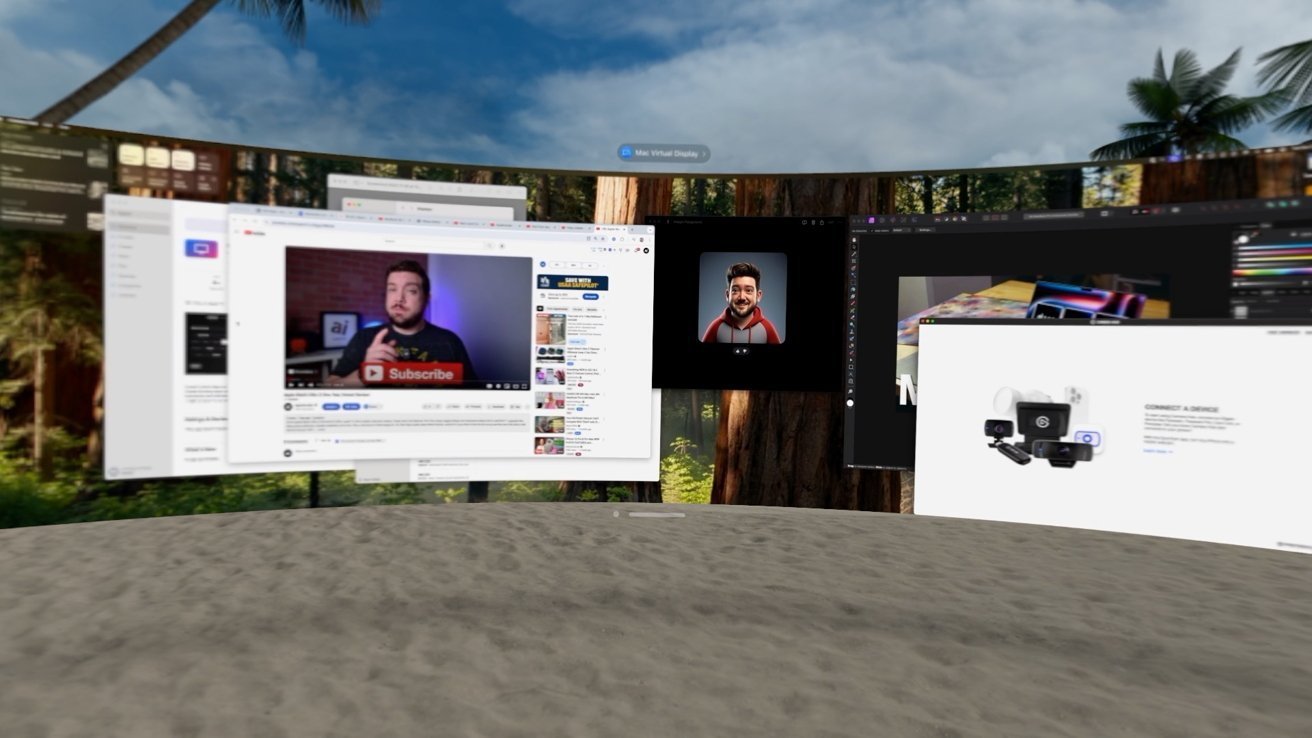Apple’s latest iteration of the Vision Pro headset, powered by the M5 chip, introduces a significant enhancement to the Mac Virtual Display feature by doubling its refresh rate from 60Hz to 120Hz. This advancement promises a smoother and more responsive user experience, particularly beneficial for tasks requiring precise visual fidelity.
The original Vision Pro, equipped with the M2 chip, supported variable refresh rates up to 100Hz. However, when utilizing the Mac Virtual Display, the refresh rate was capped at 60Hz, regardless of whether the connection was established via the Developer Strap or streamed over Wi-Fi. This limitation often resulted in noticeable motion blur and reduced responsiveness, especially during high-speed interactions or when viewing dynamic content.
With the introduction of the M5-powered Vision Pro, Apple has addressed this constraint. The new model supports a consistent 120Hz refresh rate across all applications, including the Mac Virtual Display. This enhancement is expected to significantly reduce motion sickness and improve the overall visual experience, making virtual interactions more seamless and immersive.
In addition to the increased refresh rate, the M5 Vision Pro boasts a 10% increase in pixel rendering capability on its custom micro-OLED displays. This improvement is achieved through enhanced foveated rendering, leveraging the higher processing power of the M5 GPU. As a result, users can expect sharper text and more detailed images when using the Mac Virtual Display, enhancing readability and visual clarity.
The M5 chip itself brings notable performance upgrades over its predecessor. Featuring a 10-core CPU and a 10-core GPU, the M5 delivers improved multithreaded performance, leading to faster load times and more responsive applications. The inclusion of hardware-accelerated ray tracing in the GPU allows for more realistic lighting effects and shadows, enhancing the visual quality of graphics-intensive applications and games. Furthermore, the M5’s 16-core Neural Engine, coupled with Neural Accelerators in each GPU core, accelerates AI-related tasks, making features like capturing Personas or creating spatial scenes from photos up to 50% faster.
These hardware advancements are complemented by software improvements in visionOS 2.2. This update introduces support for wider Mac displays within the Vision Pro environment, allowing users to experience a virtual monitor equivalent to two 4K displays side by side. Audio from connected Macs is now routed through the Vision Pro’s speakers, and gaming responsiveness has been enhanced. Bug fixes addressing issues with video playback in Firefox and Siri responsiveness have also been implemented, contributing to a more stable and user-friendly experience.
The combination of the M5 chip’s enhanced processing capabilities and the software improvements in visionOS 2.2 positions the new Vision Pro as a formidable tool for professionals and enthusiasts alike. The increased refresh rate and improved display quality make it particularly suitable for tasks that demand high visual fidelity, such as graphic design, video editing, and immersive gaming.
In summary, the M5-powered Apple Vision Pro represents a significant step forward in spatial computing. By doubling the refresh rate of the Mac Virtual Display to 120Hz and enhancing display resolution, Apple has addressed key limitations of the previous model, offering users a more immersive and responsive virtual experience.



